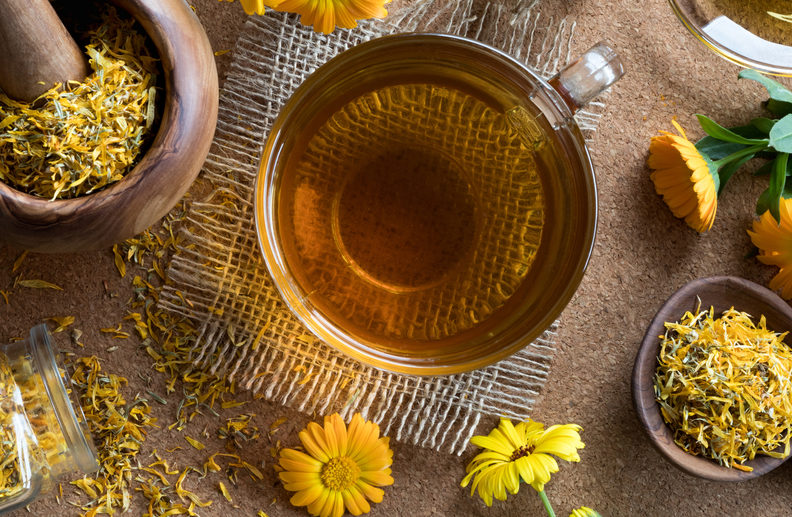Calendula (Calendula officinalis) is a beautiful yellow flower that can benefit your horse’s skin health!
Often confused with the regular marigolds you see in people’s yards, the lovely Calendula not only blooms bright and beautiful, but also adds a tasty flair to foods and gives a powerful healing punch to salves and other topical skin products.
Plant parts and uses
The Calendula flower (bulb and petals together) contains powerful antioxidant and anti-inflammatory properties. Extracts from the flower have historically been used to soothe irritated skin, including wounds, burns, and rashes. Thought to control bleeding and encourage the development of collagen structures and mucus membranes, the oil, tinctures, and extracts made from Calendula are popular ingredients in ointments. It can also be used in a poultice, compress or soak. Lastly, the flower is high in antioxidants, including lutein, lycopene, beta-carotene, quercitin, and rutin, which can all help speed up the healing process.
Calendula flower petals can be eaten either cooked or raw, but for the best quality, be sure to target the petals that are bright yellow or orange. If making an extract, oil, or tincture, include the full flower head, as the medicinal properties found in the flower are mostly found in its green base.
Most common uses for horses
Calendula is a popular ingredient in salves for horses and can be helpful for alleviating insect irritation, mud fever, blanket rubs, burns and wounds. You can also prepare a tea – steep in hot water for 30 to 60 minutes – and apply a compress to red, itchy, raised irritations to help reduce inflammation and speed healing. For general antioxidant and anti-inflammatory support, and to add a little brightness to your feed pan, you can also feed whole dried flowers; horses find them very palatable.
Home grown
Calendula is a very easy herb to grow and typically blooms July through October with bright beautiful flowers. It is typically an annual unless you live in more temperate climate, where it can be a short-lived perennial. Plant the herb in the spring in non-draining soil with full or partial sun. Once the herb is blooming, be sure to pick the flowers every three days or so to prolong the flowering season. Once you’ve harvested the flowers, set them out to dry so the petals are crunchy – roughly ten days.








